{english below} No tener las cosas claras en la vida es la principal causa de ansiedad del 99,9% de la población de este nuestro planeta. Y el otro 0,1 que si que las tiene, tiene demasiado miedo como para atreverse a darle una patada al ruido y llegar hasta el final. Pero parece que antaño, existía un selecto número de individuos que se desligaban de esas cifras y dedicaban su tiempo a lo que les apasionaba (en vez de a darse de cabezazos contra la pared). Wynn Miller, conoció a su inusual musa, Tony Alva y decidieron que ambos serían un equipo. Cada uno haciendo lo que mejor sabe. Y de una manera diferente a la de los que mejor saben. Fotografía y skate desde nuevos ángulos e iluminaciones. Juventud y experiencia hasta que el cuerpo aguante y la mente diga ”basta”.
Y es que Miller, combinaba la calle y los estudios como patios de recreo en los que asentar su carrera y encontró en la fotografía publicitaria un filón que a día de hoy, le mantiene sin empañar su talla de leyenda como ”lente del patín”. Nos cuenta su historia y sus historias en un entorno lleno de contrastes como es Los Ángeles.
¿Recuerdas tus principios? ¿De dónde provienes y por qué razón comenzaste a hacer fotos?
Crecí surfeando en Los Ángeles, California. A principios de los setenta, hice un viaje a Maui y me enamoré de la isla, así que me mudé. El surf era genial y cogí bastante buen nivel. Todo surgió cuando mi padre vino a Hawaii por un viaje de negocios y me prestó una preciosa Fujicarex 35mm SLR. Desde ese día, empecé a hacer fotos y aún no he parado. Me he dado cuenta de que esta es mi manera de compartir mi modo de ver el mundo.
Después, conocí a un tío que vivía en Lahaina que tenía un cuarto oscuro en la parte trasera de su casa donde me enseñó cómo revelar en blanco y negro. Me enamoré del proceso y conseguí aprender a hacerlo bastante bien, pero quedándome en Hawaii iba a ser difícil mejorar mucho más. Así que me fui de vuelta a Santa Mónica para apuntarme a clases de fotografía y comencé a trabajar como asistente para fotógrafos reconocidos en la ciudad, además de fotografiar todo aquello que me interesase.

¿Cómo era Los Ángeles en aquel entonces?
A finales de los setenta, LA era un buen lugar donde estar. El Punk arrancaba, el surf y el skate empezaban a hacerse más populares y siempre estaba pasando algo guay. Los skaters en LA se encontraban en medio de la misión de encontrar piscinas vacías donde patinar y eso era siempre divertido. La sequía había hecho que muchas piscinas fueran vaciadas y abandonadas, así que nos colábamos y nos dedicábamos a patinar y a hacer fotos todo el día.
Elevaste la fotografía de skate y la publicitaria a un nuevo nivel en los setenta. ¿Cómo fueron esos tiempos, cuando hacías fotos a Tony y demás? Probablemente fueras el primer fotógrafo que hacía esa clase de fotos…
La gran mayoría de las fotos de patín se hacían con cámaras baratas de una lente. Y mientras tanto, los chicos, solo podían seguir patinando y rezar por una buena toma. Mi planteamiento era diferente. Tony y yo decidimos que queríamos que las fotos tuvieran nuestro propio estilo. Quería fotografiar a Tony en poses casi heroicas. Llevé mis focos del estudio a la piscina y organicé el shooting con él.
Alumbré hacia un área específica y Tony patinó por ella una y otra vez hasta que conseguimos lo que queríamos: una foto de skate con pose. Limpia, cool y bien iluminada, una foto que perfectamente podría haber sido hecha en mi estudio para un anuncio.
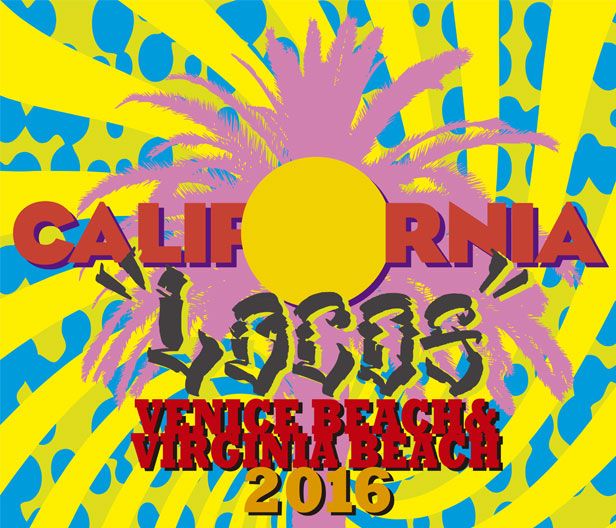
En los setenta, ¿cual crees que era la conexión entre el punk y el surf y el skate? ¿Crees que el punk influyó a los patinadores de la época o fue al revés?
En los cincuenta, el surfing estaba considerado como un deporte rebelde. Los surferos eran encasillados como gente que no quería ser parte de la sociedad, como gente vaga. Y de eso, se contagió también la subcultura del skate, que era considerado también como un deporte de rebelión. El surf y el skate ahora son algo mainstream, como si hubieran dado un paso hacia atrás, pero sus orígenes están enraizados en la rebelión y en lo contrario a lo establecido.
Creo que es por eso por lo que era natural que encajaran con cualquier tipo de arte o música rebelde que ocupara la escena a su mismo tiempo. Los skaters se identificaban con el punk porque expresaba el mismo ethos que ellos representaban.
¿Solías viajar con Tony? ¿Qué recuerdos te vienen a la cabeza?
Hicimos un libro y una exposición llamada “The Mad Dog Chronicles” (entre 2002 y 2004) y los mostramos por todo el mundo. Viajamos por Inglaterra, Italia, Suecia y Japón. Cuando estuvimos en Francia, organizamos una demo de skate en la parte más alta del Opera Building de Deauville. Fue una salvajada. Fuera donde fuese que estuviéramos, siempre había una un grupo de niños enorme mirando a Tony patinar, para después agolparse para pedirle un autógrafo. Sin duda, era el mejor patinador del mundo en aquel momento.

Arizona Maravilla
¿Porqué solo hiciste fotos con Tony y no con otros miembros del Dogtowm como Stacy Peralta o Jay Adams?
Tony era el único que me interesaba en fotografiar desde que le vi patinar. Era de lejos el mejor de todos y eso era exactamente lo que quería capturar. Movía a las masas sin importar donde estuviese. Además, uno de sus objetivos era el elevar el deporte a otro nivel y su fotografía de una manera creativa, lo cual era mi meta también.
¿Estuviste también involucrado en el mundillo de la fotografía del surf? ¿Y en el del punk y el rock?
Siempre estuve metido en la escena surfera de Malibú, Santa Mónica y Venice. Tony yo surfeábamos juntos. A partir de los 80, el punk empezo a mezclarse con el ambiente skater, pero yo no me metí demasiado en ese mundo y trataba de pasar poco tiempo con su gente… demasiado raros y violentos.
¿En qué momento te diste cuenta de que podías ganarte la vida siendo fotógrafo?
Sabía que la respuesta hacia mis fotos era buena, pero no estaba seguro de poder hacer carrera de ello. Mi primer encargo profesional fue el fotografiar a Don Cornelious de Soul Train, durante una de sus actuaciones. Al acabar, Don se acercó a mi y me dijo ”Me ha gustado trabajar contigo”, y entonces es cuando supe que estaba metiéndome en algo bueno.
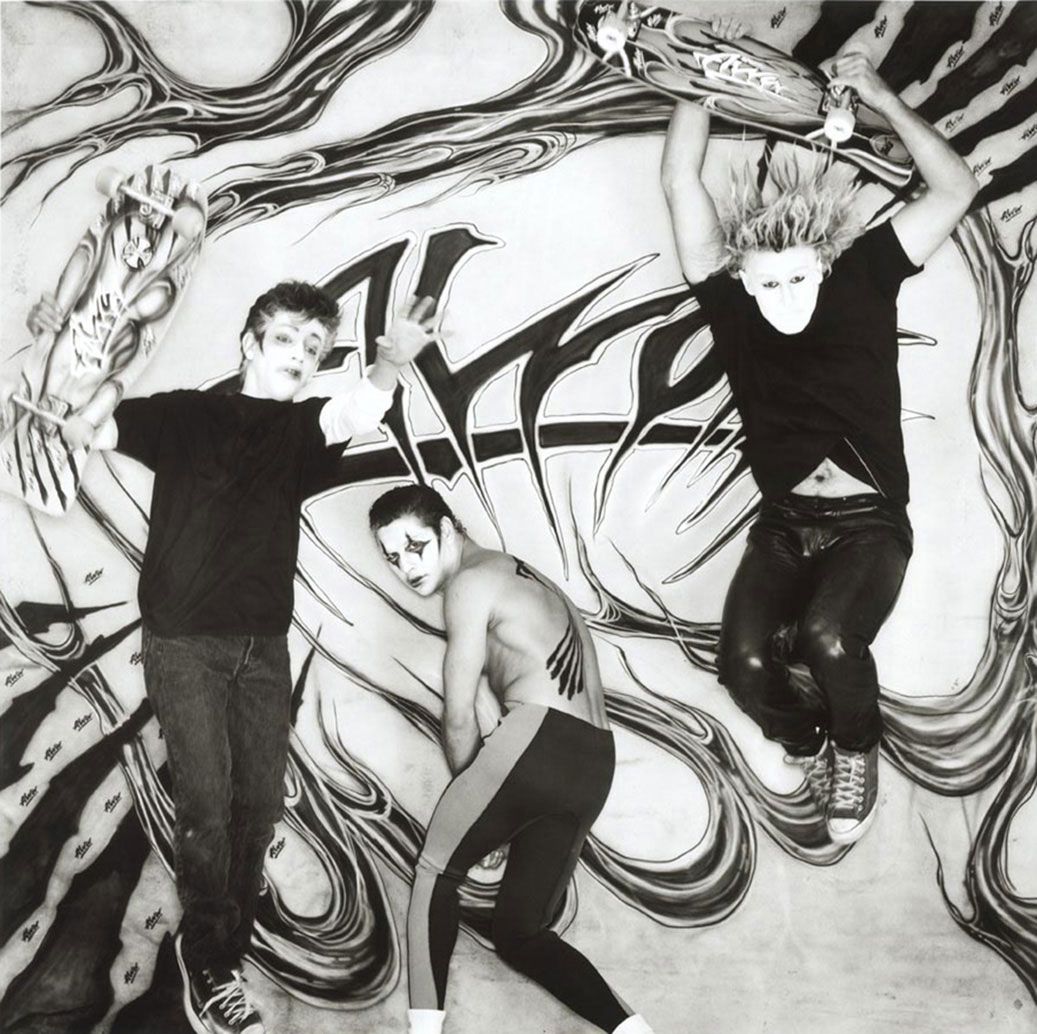
Cuéntanos tu historia con Soul Train, ¿cómo fue trabajar con ellos?
Soul Train fue el primer programa de televisión sobre música afroamericana y fui contratado para grabar la cabecera del magazine junto con Don, su presentador, una de las piezas angulares de la cultura de los 70 y los 80.
¿En ese momento, las fotos de skate que hacías eran por trabajo o por hobby?
La fotografía era mi trabajo, pero la foto de skate era mi pasión.
¿Y cómo fue el momento en el que tu primera foto en un skate magazine fue publicada?
Fue brutal saber que había ganado el Premio King James a la excelencia fotográfica que Skateboarder Magazine entregaba en 1979. Sentí que toda la creatividad y el tiempo que Tony y yo habíamos echdo había sido valorado. Creo que supusimos una gran influencia ya que permitimos que este tipo de fotografía fuera más artística y bella.

¿Cuál fue el patinador o la persona a la que hayas fotografíado que más te ha impresionado?
Tony Alva era una estrella. Le conocí cuando un amigo que también patinaba me pregunto si quería fotografiar una sesión. Nos acercamos a la pool de Oxnard y me di cuenta de que uno de ellos era MUCHO mejor que el resto… un tío entre punk y surfero con el pelo revuelto y un una actitud rebelde. Así que le pedí a mi amigo que nos presentara. Fue como ”Wynn, este es Tony Alva”, entonces, mi amigo le dijo que era un gran fotógrafo muy bueno, a lo que Tony contestó: ” Yo seré quien juzgue eso”. Desde entonces, le he fotografiado por todo el mundo.
¿Cómo fueron aquellos tiempos con los Arizona Maravilla (Este de Los Ángeles), cómo, cuándo, dónde, por qué de esas fotos?
Recibí una llamada de mi cuñado preguntándome si quería echar unas fotos a una pandilla del este de LA llamada Arizona Maravilla. Acepté y me fui para allá con él. Nunca había estado ahí y fue lo más cruzar con los LowRiders y las Rukas (sus novias) Whittier Bulevard. Estaba impresionado, así que les pregunté por hacer unas fotos juntos y la gran mayoría aceptó, pero algunos otros dudaban de si era un policía. Llevándoles las copias cada fin de semana, poco a poco fueron aceptándome. La pandilla era bastante pequeña pero tenía una gran reputación. Siempre había armas entre medias y eso, a veces, dba un poco de miedo, pero me hice buen amigo de algunos de ellos.
Una vez, uno de los “peewees” fue disparado y murió según volvía de la tienda. Algunos de ellos se mosquearon bastante y querían venganza. La verdad es que su muerte me afectó bastante y no volví durante años. Desde entonces, he estado mostrando esas fotos por todo el mundo y hace poco, he vuelto por el barrio a ver si había alguien que conocía, pero la gran mayoría había muerto o estaba en prisión.

¿Qué fotógrafos te inspiran más, los de siempre o los nuevos?
Mi fotógrafo preferido de todos los tiempos es Irving Penn. Es de los que convierte cualquier cosa en arte. Hizo un libro de fotos solo con colillas de cigarros y sus creaciones publicitarias son tan buenas y creativas como el resto de sus proyectos artísticos. Siempre lo he admirado. Y mi fotógrafo de skate favorito es Craig Steyck.
¿Cómo ves la explosión que la cultura del skate han experimentado últimamente en todo el mundo?
Encuentro interesante que hace unos años fuese imposible encontrar a un skater en una galería de arte y que ahora, muchos patinadores incluso expongan sus trabajos en muchas de ellas. Durante cualquier fin de semana en LA puedes encontrar exposiciones comisariando el trabajo de skaters. Creo que la individualidad, la rebelión y la expresión de la creatividad en el patín ha influenciado en otros movimientos culturales.

Arizona Maravilla
Prefieres la película en blanco y negro, ¿por qué?
Me da un poco igual, además ahora que todo es digital, hay total libertad de fotografiar lo que quieras y tomar la decisión sobre el color después.
¿Qué estas haciendo ahora? En tu página web puede verse mucha fotografía comercial, anuncios… cuéntanos sobre ello.
Aún trabajo como fotógrafo publicitario pero ya no hago fotos de skate. He hecho todo lo que creo que he podido en el género y ahora, he movido ficha. Y la verdad es que estoy orgulloso de ello. He creado un libro de Mad Dog Chronicle junto con Fresh Jive a principios del dos mil, y hemos hecho un tour por todo el país con ello exponiendo en Los Ángeles, Nueva York, Vermont, París y Japón.
¿Cuáles son tus planes de futuro? ¿Algún libro, exposición, viaje…?
Estamos trabajando en un libro sobre los Arizona Maravilla y en una exposición también. Esperamos hacer un tour para el año próximo. También surfeo casi a diario y aún continuo viajando por el mundo en busca de la ola perfecta.

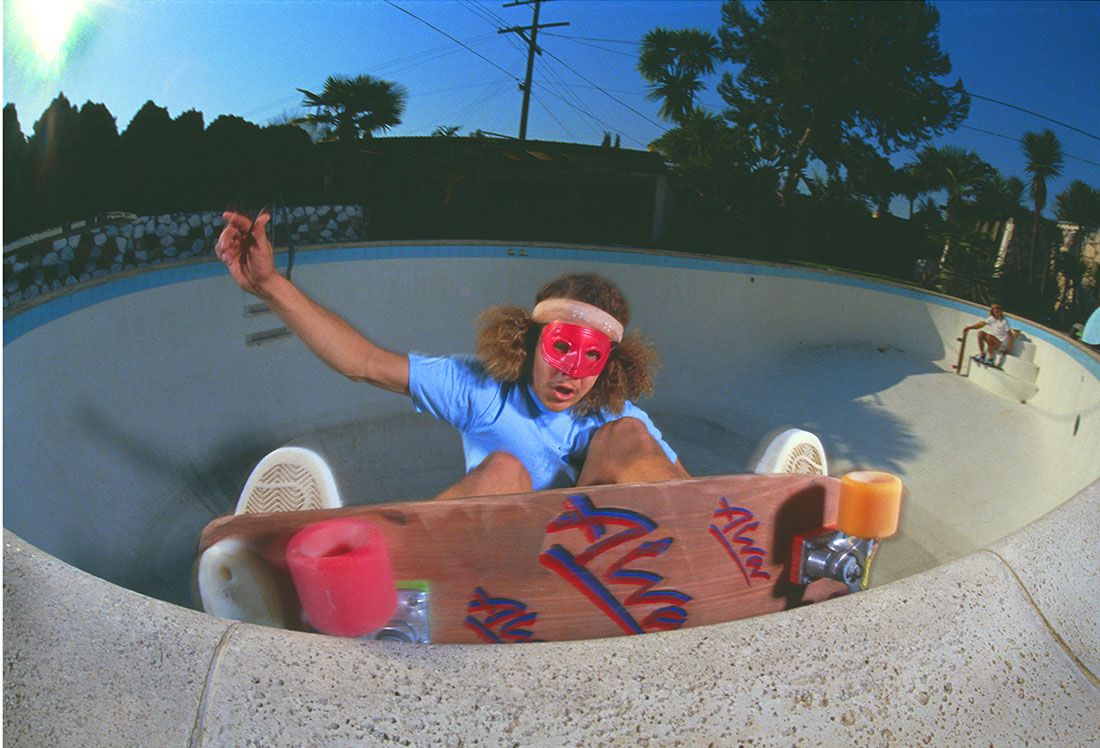

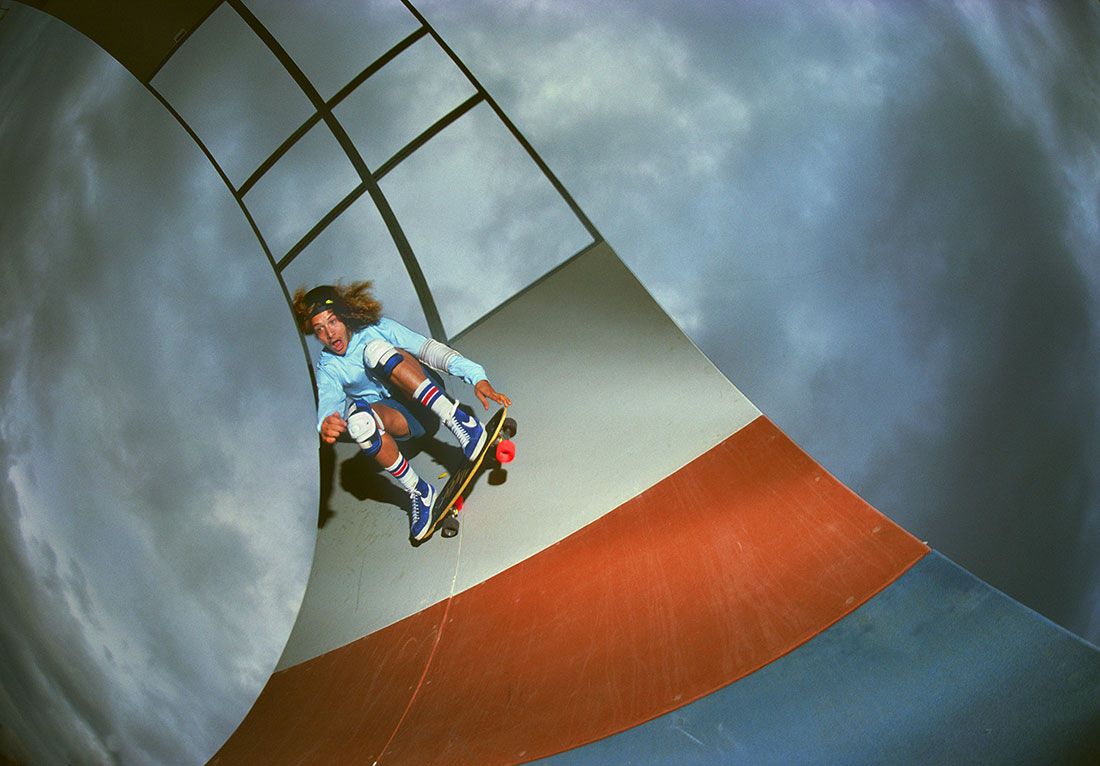
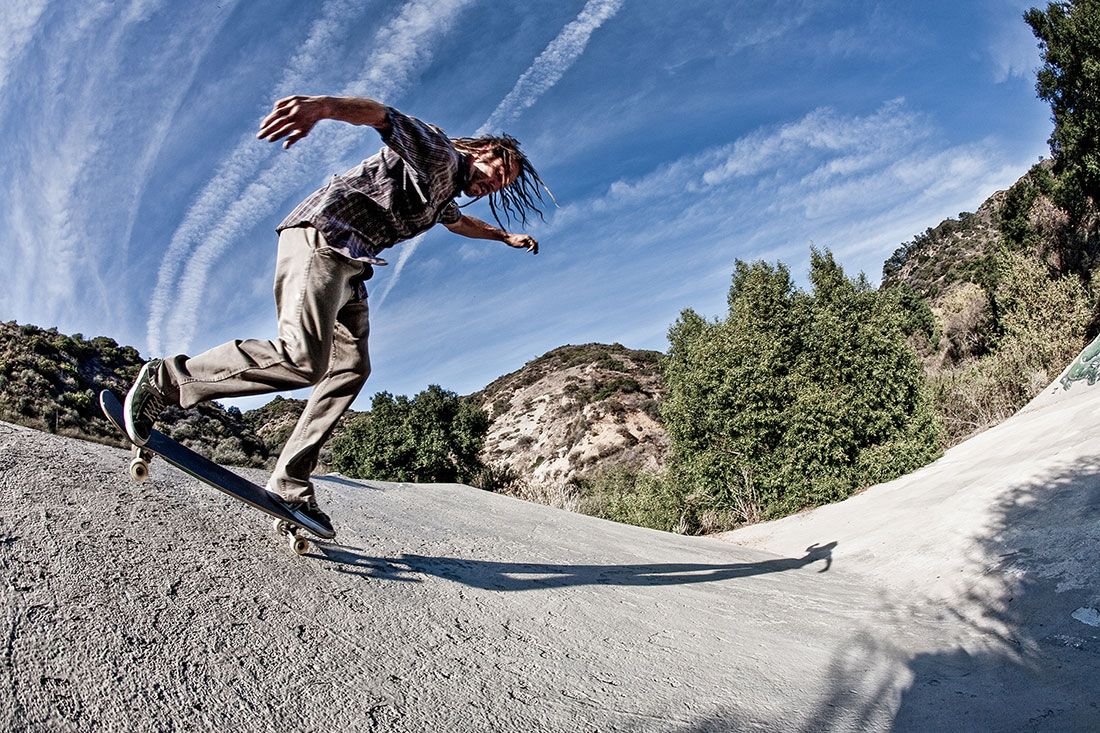
















Arizona Maravilla

Arizona Maravilla

Arizona Maravilla

Arizona Maravilla

Arizona Maravilla
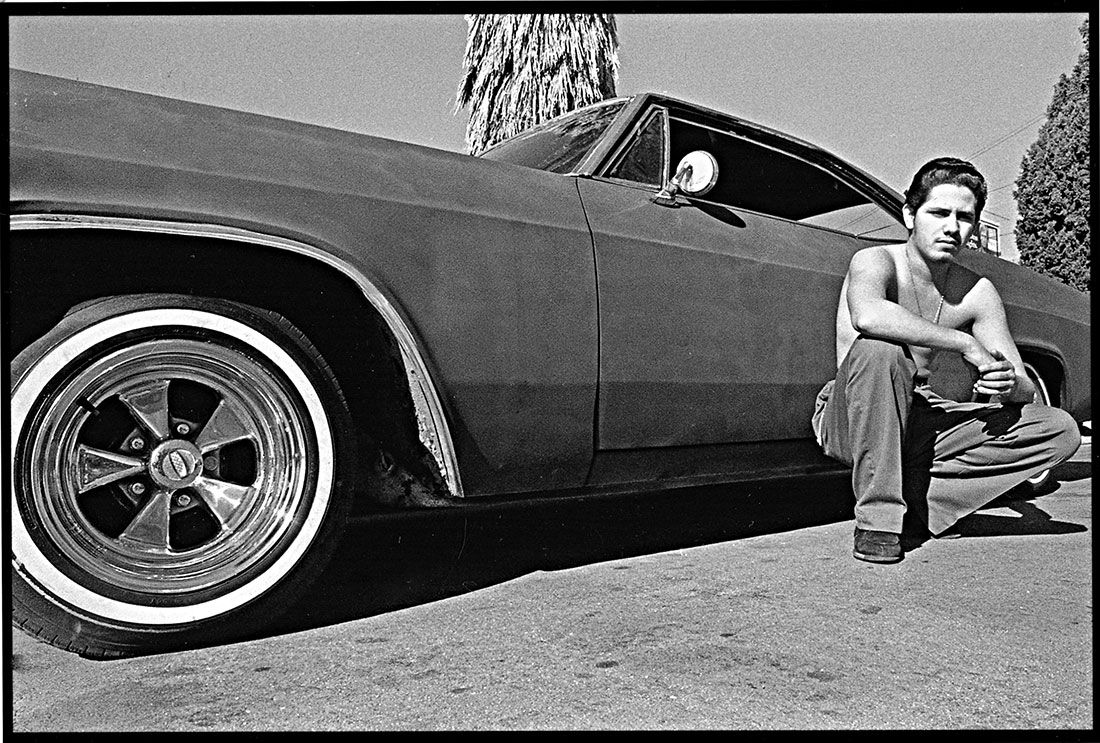
Arizona Maravilla

Arizona Maravilla

Arizona Maravilla
English:
WYNN MILLER.
FIND A PASSION AND DON´T LET IT KILL YOU
Not to have the things clear in life is the main cause of anxiety of the 99.9% of the population of this planet. And 0.1 that have it are too afraid to dare to kick the noise out and go to the end. But it seems that once there was a select group of individuals out of these numbers that expend their time doing what fascinated them (rather than bumping their heads against the wall). Wynn Miller, met his unusual muse, Tony Alva and decided that both would be a team. Each one doing what they did best. And in a different way to the way used by the best ones. Photography and skate from new angles and lighting. Youth and experience until your body and mind say “enough”
And it is that Miller, combined streets and studies as playgrounds on which to build his career and found in advertising photography a reef that nowadays, keeps him without tarnishing his size as “skate lens”. He tells us his story and stories in that contrasted environment that Los Angeles is.
How do you remember the beginning? Where do you come from and why you started to make photography?
I grew up surfing in Los Angeles, CA. In the early 70’s I took a trip to Maui and fell in love with the island, and moved there. The surf was great and I got pretty good. It just so happened that my father took a trip to Hawaii on business and while he was there he handed me a nice Fujicarex 35mm SLR camera. I started taking photos that day and I have not stopped yet. I realized that this was a way I could share with people the way that I saw the world.
I met a guy who lived in Lahaina who had a darkroom behind his house and he was cool enough to show me how to develop and print black and white. I fell in love with the whole process. I got to be a pretty good printer but I didn’t think I would get much better if I stayed in Hawaii. So I left and moved back to Santa Monica, where I enrolled in photography classes and started assisting well known photographers around town, and shooting whatever interested me.
How was LA back then?
In the late 70’s LA was a great place to be. Punk was starting, surfing and skating were becoming more popular, and there was always something cool going on. The skaters in LA were on a mission to find empty pools to skate in, and that was always fun. The drought in LA created many abandoned and empty pools, we would sneak in and skate and shoot all day.
You took skate photography and advertising to a new level in the 70s. How was that time, making photos to Tony and many others? You were probably the first photographer in doing those skate pics.
Most skate photos of the time were taken with cheap one lens cameras. Guys would stand around the pool hoping to grab a good shot. My approach was different. Tony and I decided we wanted to do Skate photos in our own style. I wanted to shoot Tony in almost heroic poses. I brought my studio lights down to the the pool and set up a shot with Tony.
We would light a specific area and have Tony skate through it again and again until we got what we wanted. It was a posed skateboarding shot with Tony as the main subject and not a bunch of kids standing around . Clean, cool and beautifully lit was the goal. They were shots like I would shoot in my studio for advertising purposes.
In the 70s, what do you think it was the connection between punk with surfers and skateboarders? And how do you think it influenced the skaters in that time? Did punk got inspiration from skateboard or vice versa?
In the 1950’s, surfing was considered a rebellious sport. Surfers were looked at as people who didn’t want to be part of society, as lazy bums. So that morphed into the skateboarding subculture, which was viewed as a rebellious sport as well. Surfing and skateboarding have become mainstream, even revered sports today, but their origins are rooted in rebellion and an anti-societal spirit. I think that’s why it was a natural match with whatever rebellious music or art was entering the scene at the same time. Skaters were drawn to punk because it expressed the same ethos that they represented.
Did you use to travel with Tony? Any special memory?
We put together a photo exhibit and book and called it “The Mad Dog Chronicles” (entre 2002 y 2004) and showed it around the world, shooting demos that we would set up in unusual places. We travelled to England, Italy, Sweden, and Japan. When we were in France, we set up a skate demo on the top of the Opera Building in Deauville. That was wild. Wherever we went, huge crowds of kids would gather around watching Tony skate. Afterwards the kids lined up for autographs. Without a doubt Tony was the best skater in the world at that time.
Why did you do all those pictures with Tony and not with others from the Dogtown like Stacy Peralta, or Jay Adams
Tony was the only guy I was interested in shooting once I saw him skate. He was far and away the best skater of his time, and that’s what I was interested in capturing. Wherever he went, he drew crowds, and created excitement. He was also interested in elevating the sport and the photography of the sport creatively, which was my goal as well.
Were you involved in the surf scene photography back then too? And what about punk or rock?
I was always involved in the surf scene in Malibu, Santa Monica and Venice. Tony and I surfed together. But in the early 80’s punk began to enter the skate scene. I didn’t dig the punk world and spent less and less time shooting and hanging out with punks. Too creepy and violent.
What was the moment in which you truste you could make a career as a photographer?
I knew people were responding to my gang and skating photos, but I wasn’t sure if I could make a career out of it. My first professional assignment was to shoot Don Cornelious, of Soul Train, on the set of his show. Don came over to ma after the shoot and said “I liked working with you, man.” I knew I was on to something.
Please, tell us the history about Soul Train. How was to work on that?
Soul Train was the first African American dance and music program on TV and I was hired to shoot a magazine cover of the host, Don Cornelius. It was a real cultural touchstone in the 70’s and 80’s.
Making pictures to skateboarders was a job or more like a hobby?
Photography was my career, but skateboarding photography was my passion.
How was that moment when your first photo in a skate magazine was published?
It was a great feeling when I won the King James Award for Photo Excellence given by Skateboarder Magazine in 1979. I felt like all of the hard work and creativity Tony and I had been expending was being appreciated. I think we had a big hand in allowing skate photography to become more artistic and beautiful.
What was the skater or the person you photographed more impressive to you?
Tony Alva was a rock star. I first met him when a friend who was a skateboarder asked me if I wanted to shoot some skaters. We drove up to the Oxnard skate pool, and I noticed that one of the skaters was MUCH better than all the others. A wild haired surf punk with a bad attitude. So I asked my friend to introduce us. He said “Wynn, this is Tony Alva” Then he told Tony that I was a really good photographer and Tony said “I’ll be the judge of that” From that day on I shot Tony all over the world.
How was the Arizona Maravilla (East LA) times, when, how, why… did you do those photos?
I got a call from my brother in law and he’d asked me if I wanted to take some pictures of a gang in East LA called Arizona Maravilla I said sure and went down there with him. I had never been to East LA. It was amazing, gang bangers cruising Whittier Blvd. with their LowRiders and Rukas (girl friends).I was fascinated so I asked the gang guys if could hang out and take photos. Most of them were OK with it but some of them didn’t trust me and thought I was a cop. I would bring them prints each weekend and pretty soon they accepted me. The gang was pretty small but had a big reputation. There lots guns around and occasionally it got scary. I became good friends with several of them.
There came a time when one of the “peewees” got shot and died just walking back from the store. Some of the guys were pissed and wanted retaliation. I was so upset with the death that I did not go back for many years. Throughout the years since, these gang shots have been exhibited all over the world. I recently went back to the neighborhood to see if anyone I knew was around. It turns out most of them are in prison or dead.
Which photographers inspire you?
My favorite all time photographer is Irving Penn. He could turn anything into art. He did a book of photos of cigarette butts. His advertising work was just as creative and beautiful as his fine art projects. I always admired that. My favorite skateboard photographer is Craig Steyck.
How do you see the explosion of the skateboard culture all over the world?
I find it interesting that back in the day you would never find a skater in a art gallery. Now a days many skateboarders have exhibits of their work all over the place. On any weekend in LA you can find an art show featuring skate boarders work. I think the individuality, the rebelliousness and the creative expression in skating has influenced a lot of other cultural movements.
Do you prefer color or B/N films? Why?
I don’t prefer either, now that things are digital, there is a freedom to shoot anything you want and decide on the color later.
What are you doing currently? In your website seems to be a lot of commercial photography. Tell us about that. Are you working with photos from the past, doing exhibitions, books, etc?
I am still an advertising photographer, but I don’t shoot skating anymore. I did everything I felt I could in the genre, and moved it forward. I am proud of that. We did a Mad Dog Chronicle book with Fresh Jive in the early 2000’s , and toured around the country with that. We did exhibits in LA, NY, Vermont, Paris, Sweden, and Japan.
What are your plans for future? Any book, exhibition, travel…?
We are working on a Arizona Maravilla book and accompanying exhibit. This will hopefully go on tour in the next year. I also surf almost daily, and still travel the world looking for the perfect wave.
www.wynnmiller.com